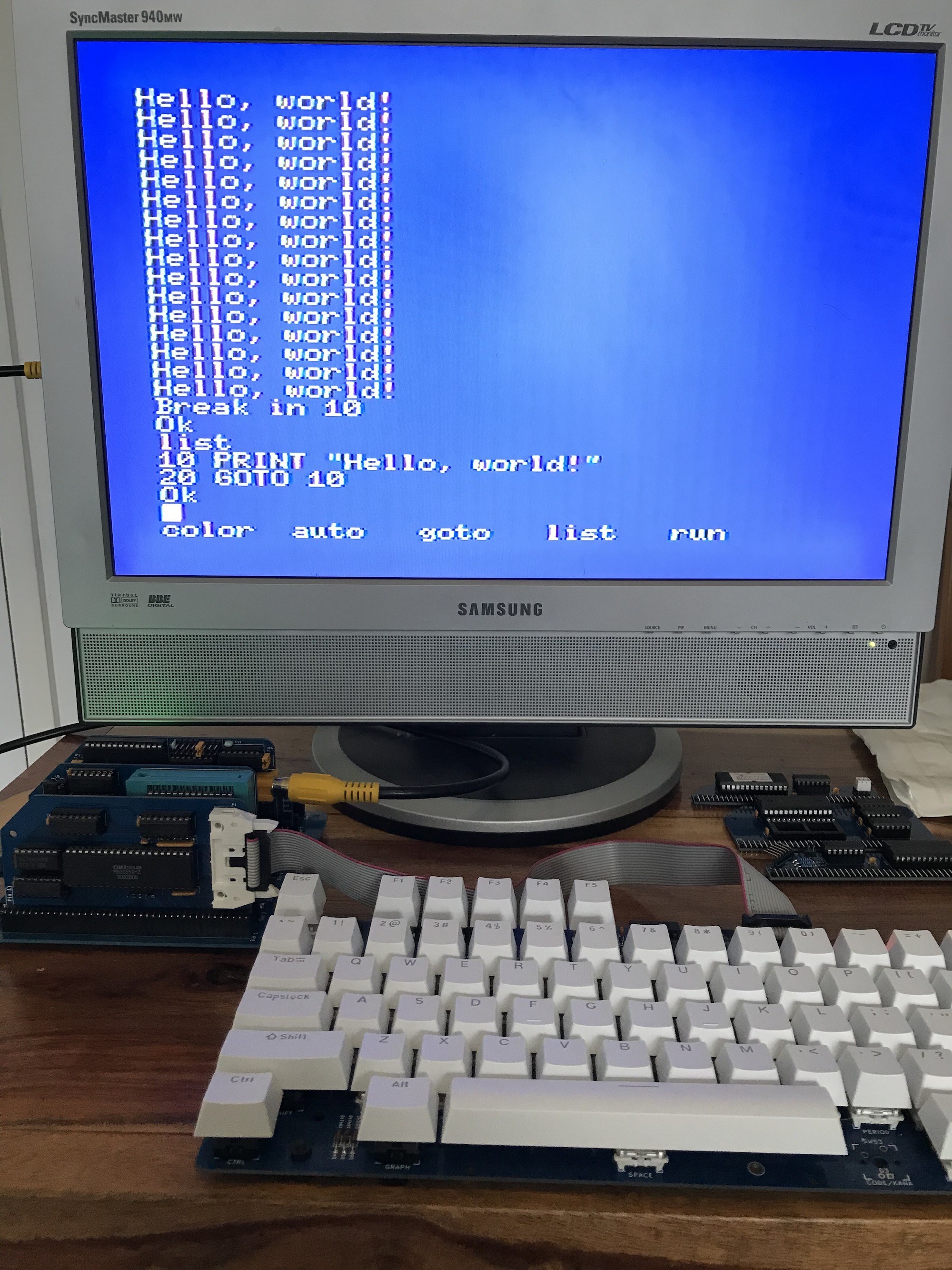This is merely a bit of a curiosity, I don't intend to explore this further now that I have a 'MSX2014' which works pretty well.
However, I did state in my earlier logs and instructions that it's necessary to add slot selection lines to ROM / RAM / Cartridge ROM modules. I wasn't able to get BASIC working at that point without doing that.
At that point though, I'd been trying to use c-bios, which I believe was never going to work with BASIC anyway. Out of curiosity, I took a standard RC2014, minus the serial i/o module and plus my MSX PPI module and lo and behold:

This is far from ideal, and I'm a little surprised that it's working at all, but it is working.
The first thing that the BIOS does is to switch in each slot in turn and see what RAM it can find (the longest contiguous amount of RAM that it can find, counting down from FFFF, is the slot that it will use for RAM. It also tests each slot to see whether a cartridge ROM is present. The slot selection won't work in this case and it'll see the ROM and RAM on every slot.)
But it does start, and BASIC appears to work well. This is working at the standard RC2014 clock speed of 7.3Mhz.
I assume that tape loading would work if I used my tape module (This would require a bigger backplane as the tape module depends on the AY sound module). Cartridge ROMs may work (again, haven't tried) if you make a rom with the BIOS in the first 16k and a 16k cartridge rom in the next 16k, and RAM in the top 32k.)
Note that I've had to use the bigger 64k ROM module, jumpered so that my ROM (BIOS and BASIC) is seen in the first 32k. It may be possible to bodge the smaller RC2014 Classic ROM module so that 32k of ROM is seen, but I haven't gone into how to do that.
Discussions
Become a Hackaday.io Member
Create an account to leave a comment. Already have an account? Log In.